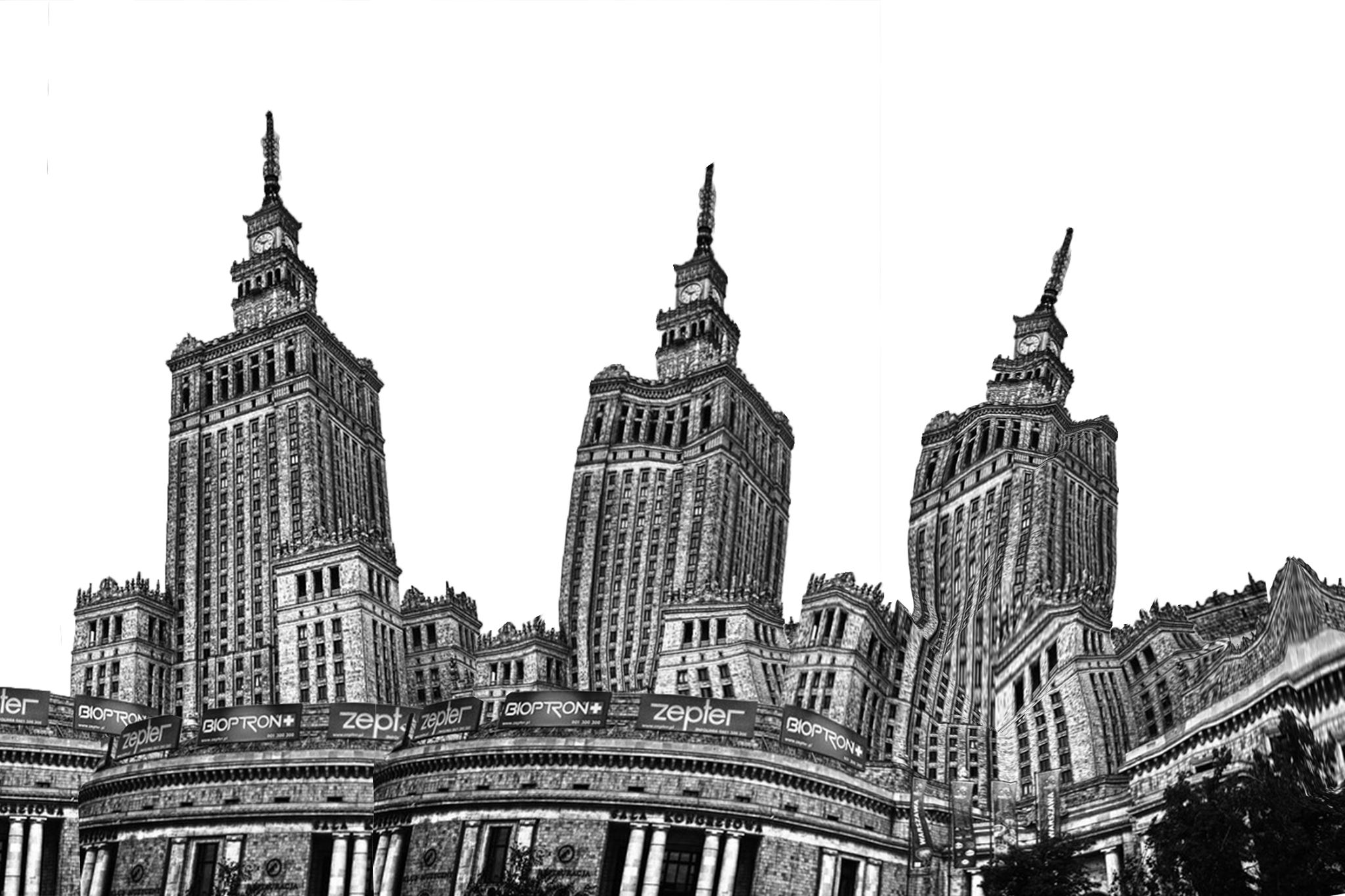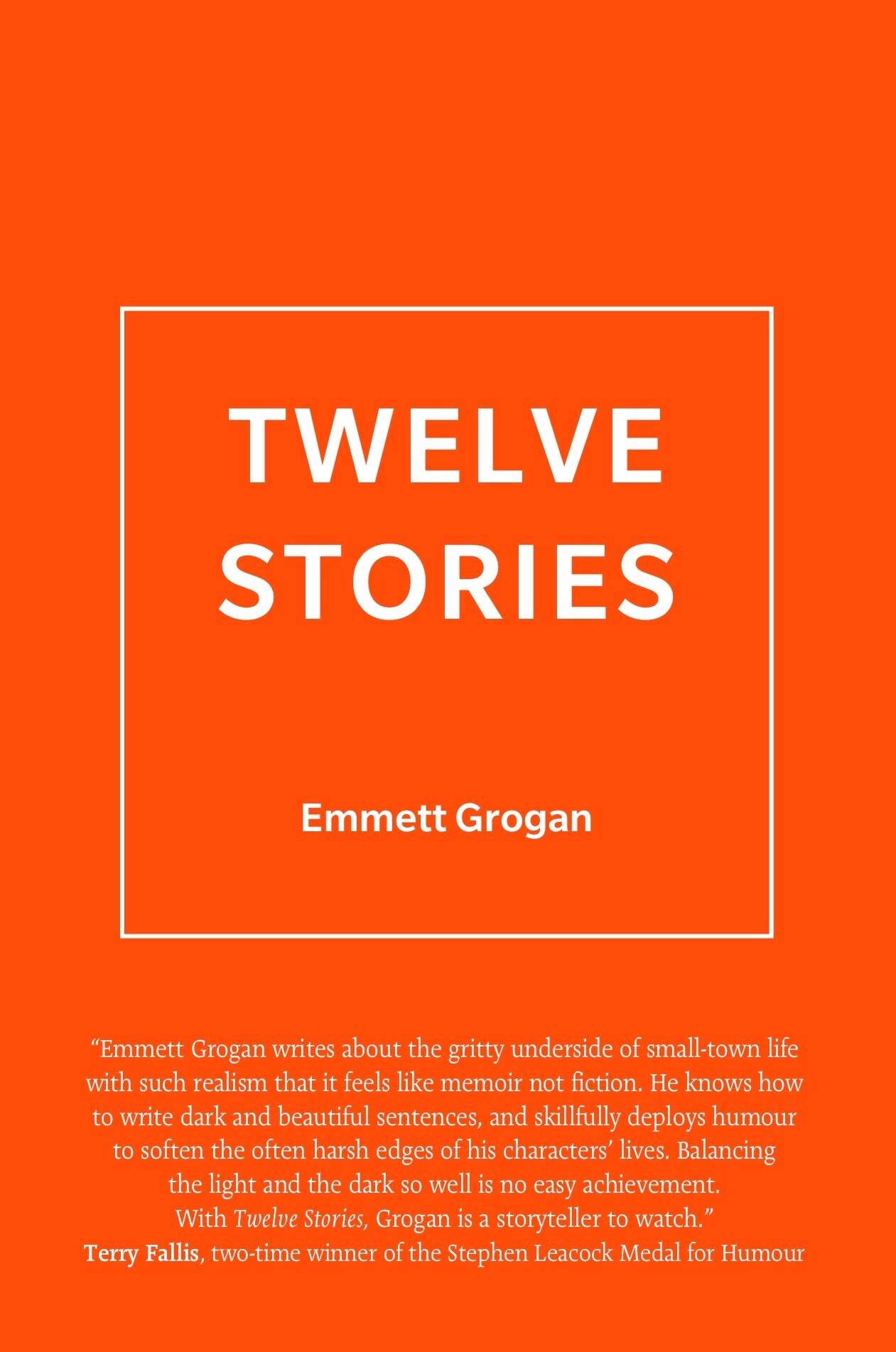
Moving Towards Architectural Forgiveness in Poland
Following the Second World War, when nearly ninety percent of Warsaw was reduced to rubble, the city was rebuilt according to the vision of socialist realism and Stalinist classicism. The architectural zenith of this vision was undoubtedly the central Pałac Kultury i Nauki (PKiN), which has since established its status as a Polish landmark, a cityscape dominanta, and one of the most controversial buildings in the country. Christened in its early days as ‘Stalin’s Palace’, the edifice has never ceased to attract popular attention, winning itself new titles regularly: ‘Russian Wedding Cake’, ‘The Elephant in Lace Underwear’ (due to its caricaturistic appearance), or better still, ‘Stalin’s Dick’. One of my non-Polish friends once referred to it as the ‘Empire State on Ket’. Humorous designations aside, the Palace possesses a powerful presence that extends across more than one landscape, subjugating not only the physical body of the city, but its people too.
Having grown up in Warsaw, I’ve been conditioned to see the Palace of Culture as the city’s icon – an emblem of sorts – and until very recently, I had never questioned what sort of emblem it was exactly. I was brought up in a distinctly international environment. My parents spent the majority of their lives abroad, and I’ve only ever attended English-speaking schools. I think many would say that as a result my ‘Polish-ness’ has been compromised, or that perhaps it never even existed. While I think that may be a slightly far-fetched appraisal, I do agree that for a long time I have unintentionally maintained a rather shocking distance from my Polish heritage, which eventually became something that I would have to (re)discover. Moving to the UK almost three years ago now meant being physically further away from home than I’d ever been before. Ironically, this has made me feel a growing closeness to it, along with a renewed sense of ‘Polish-ness’. Furthermore, the physical remove has granted me an even greater sense of objectivity in my perception of the country. What has become clear to me since I started thinking more about Poland is the presence of a deeply conflicted national attitude towards one of its most recognisable buildings (both in terms of size and its historical significance). Ceaseless discourse surrounding the Palace of Culture in Warsaw confirms the success of the totalitarian urban strategy of the socialist regime, but the implications of that strategy appear two-fold. It seems that on one side, older generations want to forget the nation’s past by denying it, and by destroying painful reminders like the Palace. Meanwhile, younger generations appear to find their Soviet urban legacy fascinating – almost magnetic – treating it as an opportunity to subvert history and to give the building a chance at forgiveness.
What is the Palace of Culture and Science, why is it problematic?
The end of the Second World War in Poland was followed by the establishment of the Biuro Odbudowy Stolicy, otherwise known as BOS (a Committee for the Rebuilding of the Capital), and by the consolidation of Soviet control over the country. Socialist realism and Stalinist classicism were imposed as necessary architectural styles. Soviet architects, be it of Polish or Russian descent, tried to create spaces of incredible majesty and grandeur – spaces which sought to inspire citizens by imprinting upon them the power and greatness of the USSR and the power to become ‘greater’ people. This defined the project for the Palace of Culture in Warsaw.
Initially Joseph Stalin’s Palace of Culture and Science, the monumental tower was built between 1952 and 1955 as a ‘gift’ from the Soviet Union, ‘the Eighth Sister’ (and if you’ve been to Moscow you’ll know what the other seven are). It was meant to become the symbol of “Polish-Russian friendship” (which was fake, by the way) while Poland was still under Soviet rule. Impressive both in size and stature, the Palace of Culture was, and remains to this day, the tallest building in the country, with its surrounding Parade Square being the largest open communal space in Europe.
Over the years, the Palace has continued to be a point of social controversy within urban discourse. Since its rise to power in 2015, the ruling ultra-right-wing party (send help) in Poland has actively embroiled itself in the renaissance of de-communisation crusades, aiming to rid the city of all lingering communist influences – including the Palace. Varsovians often bemoan that their city suffers from a ‘Palace Complex’: many still see it as a pathological totem of communist rule, and yet, other younger generations are unbothered by its problematic origins and actively perceive it as a significant symbol of their city and their culture – maybe even national (architectural) legacy. So what has changed?
From oppressive to iconic: a not-so-smooth change in reputation
In its early days, the Palace was almost unanimously resented by the Polish community, a ‘monster’ and a propaganda tool; Poles called it the “unwanted gift”. Legend has it that in the late 1940s the Soviets had asked Bolesław Bierut, who was the Polish president at the time, whether Poland would prefer to be gifted a monumental building or a metro line. Bierut responded that Warsaw could really benefit from a metro line, so naturally, we were given a Stalinist fortress. The cynicism of this story highlights the frustration that Poles felt not only towards the Palace project but mostly towards the faux-friend façade of the Soviets.
Following the end of Soviet rule in Poland in 1989 and the fall of the USSR in 1991, the new Polish government was on a mission to rebuild not only certain urban areas, but above all, to rebuild a sense of Polish national identity and independence. Therein, it embarked upon its first de-communisation quest, a significant part of which were campaigns to eliminate the majority of Soviet architecture, and most importantly, the Palace. While a number of these deconstructive projects were unsuccessful, a parallel movement of ‘de-Stalinisation’ was put into motion, resulting in the removal of the man’s name from the monument.
Campaigns championing the demolition of the Palace on the grounds of it being a toxic figure of Soviet oppression continued into the 21st century, with prominent Polish politicians expressing their support. Contests for architectural projects to neutralise the Palace’s dominance and or redefine its surrounding space were held (eg. Zaha Hadid’s Lilium Tower, Christian Kerez’s Museum for Contemporary Art, or the nation-wide Facebook petition to create a Central Park on Parade Square surrounding the Palace). A Social Committee for the Deconstruction of Stalin’s Palace was created. And yet, no motion was ever ratified – why?
The first place I thought to look for an explanation was Michał Murawski’s brilliant Palace Complex (2015), a book that consolidates years of his own research on the edifice. Murawski stresses the affective importance of the Palace’s architectural power for social and collective psychological well being, suggesting that it seems to have its people under a spell (unclear whether he means a curse, a charm, or as I would argue, both). Murawski notes that the percentage of Varsovians who regard the Palace as a potent symbol increased from 21% in 1992 to 32% in 2000. And while the significance of the building for the Polish capital appears to be undeniable, I rest my case that the meaning of that significance differs across generations.
Last summer, while working on an ethnographic research project investigating socialist architecture in Poland, I was able to interview several people of various ages, hoping that a response to this complex question might be crystallised. As expected, younger people showed a general consensus against the demolition of the Palace, considering it a positive and important landmark. Though seen as a reminder of both Soviet occupation and oppression, none of them claimed to be bothered by its presence. This stood in stark contrast to the responses of my older informants: only half of whom opposed the deconstruction of the building and less than a quarter of whom considered it to be a positive space.
My conclusion? That the polarisation of attitudes towards the building in question correlates with age – or rather, with one’s depth of historical experience. On a temporal scale, the birth date that would mark a shift in attitudes towards Soviet architecture falls somewhere in the early 1980s; the two opposed groups being the pre-1980s generation versus the post-1980s generation. Those born before the end of Soviet rule in Poland remember (at least some part of) the Soviet occupation of Warsaw and have experienced its consequences even after the end of communism. As a result, it is only natural that they associate the Palace with a time of propaganda, difficulty, and oppression. They don’t want to see the Palace, they want to move on from everything that, in their eyes, it represents. Just a few weeks ago, walking through Parade Square with my uncle, I heard him say that the Palace’s observation terrace has the best view in Warsaw, as it is the only place in the entire city with no view of the building. Conversely, younger people like myself, born after the fall of the USSR, experienced neither oppression nor its immediate consequences on our country. As a result, our attitudes towards the Palace of Culture have the privilege of a ‘tabula rasa’, unfettered by the building’s problematic historical past.
New Generation, New Vision
The difference in historical experiences may be the reason behind the binary split in attitudes towards the Palace, but it falls short of explaining the appeal that the building still has to young people today. Although not necessarily a centre for social life, the Palace is a key location for cultural life and initiatives. Home to an alternative cinema, the largest vintage sale in Poland, a seasonal silent disco, and one of the most popular bars in Warsaw (Bar Studio) featured in Michał Marczak’s Sundance Winning film All These Sleepless Nights, the Palace was also a primary character in Vogue Poland’s debut cover shoot in early 2018, starring super-models Anja Rubik and Małgosia Bela (almost more controversial than the Palace itself).
What provokes this fascination? Where does the willingness to re-appropriate the Palace come from? Samuel Goff of The Calvert Journal suggests that “post-Soviet culture reflects the postmodern condition of a world where the need for all-encompassing ideology has been superseded.” So what’s the replacement? In the case of Poland (which I do acknowledge, though under Soviet rule, was never a Soviet country per se), I would say that it is a desire for progress and liberation, for a positive national atmosphere and a spirit of growth, a desire for the renaissance of patriotism (nota bene not nationalism or populism). And in a curious way, the persisting obsession with the Palace of Culture and its re-appropriation in contemporary cultural and avant-garde contexts seems to be a tool to achieve that.
Jil Stoner, Architecture Professor at Berkeley, writes that like cats, buildings can live nine lives. It seems to me that Warsaw’s Palace may have skipped the first five and jumped right into its sixth life: adaptive reuse. Although “the cultural significance of the building’s original purpose may [remain] evident in its structure,” Stoner suggests, “… the building is redesigned to meet a purpose other than the one for which it was first intended,” – or in other words, it is put back into the future. It seems quite obvious by now that neither the historical nor the political context of the building’s origins will ever be forgotten – and how could they be? It is our country’s largest, most central, physical, almost sacral, reminder of Stalinism. And yet, though we cannot simply forgive and forget (or vice versa), we should remember the building’s origins and choose to forgive it.
Rather than bring down the Palace and deny the post-war occupation, a large part of contemporary Poles have started embracing their national past and distancing themselves from its negative connotations. Unburdened by the experience of historical trauma, we are living witnesses of our country’s strength and resistance. It is then unsurprising that for some, myself included, the Palace of Culture could be seen as a symbol of pride – post-communist pride, national pride, – a very concrete metaphor for my country’s resilience and its ability to survive overarching socio-spatial and socio-political turmoil.
All this considered, there is a parallel phenomenon that is worth noting: ignorant (or sometimes just cynical) cultural and spatial appropriation of the same historical token(s). Nearly all of my interview respondents had mentioned something about the ‘romanticisation’ / ‘aestheticization’ of Soviet emblems that is being caught onto by unaware masses. One person suggested that part of the Palace’s cult following is motivated by “praise for ironic and sarcastic perceptions of history, society and culture, rather than a desire to ‘own’ their national history. These people tend to draw from aesthetics of controversial cultural artefacts in order to show the distance they hold to their meaning and to create a certain image of superiority over those who take these artefacts seriously.”
Jumping onto the bandwagon, there exists another group of ‘social media enthusiasts’ (often relatively privileged), practitioners of a communist chic, who regularly share photos of not just the Palace but primarily of the old-style, communist-era, concrete flats. “A fascination with brutalism,” or “Class Tourism”? It’s no news that in recent years, the post-soviet ‘look’ (very much founded on the appropriation of lower-class features) and its cultural zeitgeist have been romanticised by alternative media – but the intensity of popular reaction to this phenomenon is as surprising as it is concerning. Until recently, most popular online content on Eastern Europe was tragically limited to mediocre memes about plumbers, vodka or Kalashnikovs… And as glad as I am to see the international representation of my culture changing, I am not always sure how to interpret it. My pseudo-sociological analysis leaves me with two possible alternatives: one, that this emerging media attention given to the Eastern, post-Soviet, post-communist, brutalist heritage really could express a genuine fascination with countries that have recently endured an awful amount of socio-political unrest. The other – that this attention is just another evanescent media obsession – nothing but a temporary darling du jour for teenage hipsters. Following this train of thought was one of my interview respondents, Pjoter C (as he wishes to be called), who emphasizes the importance of class in this phenomenon, stating that “the only people that aestheticise communist creations are spoiled kids who rely on their parent’s predatory business practices to create a life for themselves within the academic community”. These kids, he said: “have no real interaction with this type of culture, or even less so with communism, its reality, and its consequences, they just ‘study’ it.” Only time can illuminate the truth about these charges.
Whatever the case, both types of handling the past (fascination or irony, not social-media promotion, which was merely a digression) are actually different variations of the same process: the artificial creation of national identities based on the psychological revisionism of history as well as its cultural and architectural relics. It involves a dual process: first, the de-contextualisation (or de-sacralisation), and second, the re-appropriation, of architecture as a means of emancipation from the oppressive shadow of the past. Today, the Palace of Culture and Science finds itself at a liminal stage between two groups: the PRL (Polish People’s Republic) generation and the post-communist generation. The former remains fixated on the Palace as a daunting reminder of history, while the latter, free and removed from the experience of that history, perceives the building as an intrinsic element of Polish urban identity. In my eyes, this division has been a strong stimulus, triggering the Palace to move away from politics and gravitate towards culture. That given, I hope that our society will continue moving towards architectural forgiveness, as that is the only way to further our progress and continue building a new (urban) sense of “Polish-ness”. By forgiving the building its origins, we have a chance to redefine who decides what a space should and can be. This certainly won’t make things right, or fix the injustices of the past, but it might help us reshape our relationship to history and to the future. For now, all that Soviet architecture can hope for is forgiveness. Maybe someday it will get its chance at redemption.∎
Words by Asia Feliks. Artwork by Miriam Feldman.







